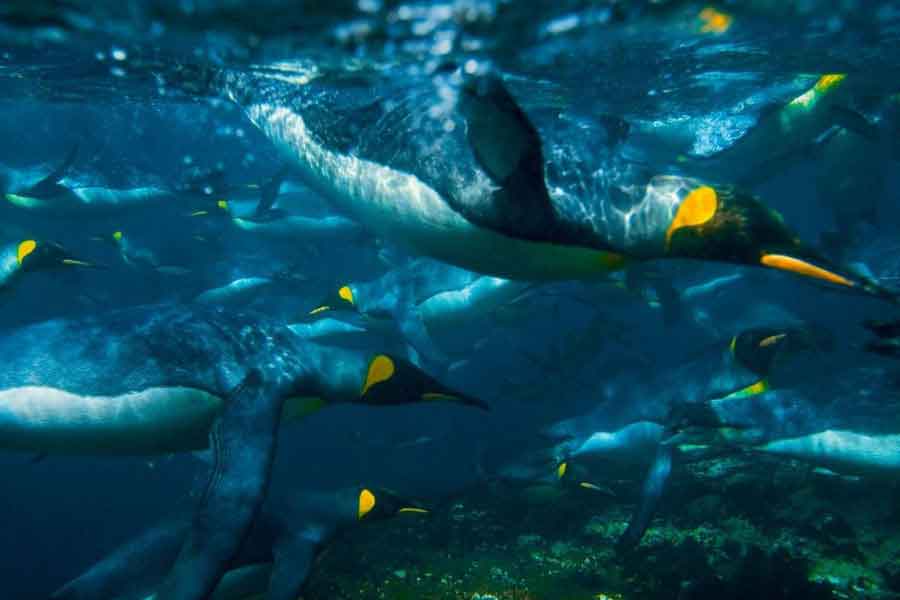
Life always finds a way, even on the freezing beaches of Antarctica where temperatures reach -65ºC. This is the place the emperor penguin chose to bring its offspring into the world. In mid-November, the females lay a single egg and then go to the sea to feed for a couple of weeks, leaving the egg in the care of the father.
When the mother returns, it will be the father’s turn to feed, and they take turns in caring for the egg. To obtain fish, these peculiar birds dive to an incredible depth of 250 meters, equivalent to the height of an 80-story building.
They don’t dig a nest but instead incubate the egg between their feet, covering it with a fold of skin. In mid-January, a chick covered in brown down will hatch, protecting it from the cold, but it still doesn’t have the thermal insulation to dive into the sea.
When they come into the world, the chicks weigh as much as an apple, but four months later, in April, they will weigh 10 kg, thanks to the food regurgitated by their parents. By September, the surviving chicks will barely reach 6 kg in weight.
This is because, in winter, their parents go out to sea to find food. During these occasions, they leave the chicks alone for a period of 30 to 60 days, huddled together to protect themselves from the cold, forming true nurseries of chocolate-colored youth eagerly awaiting food.
When their parents return from the sea, they emit a particular sound that the chick can distinguish among all the others, and they regurgitate food to keep it alive until spring, when it will molt its feathers and finally don its luxurious coat, providing the necessary thermal insulation to go to the sea and find its own food.
This species of penguins live for about 20 years and have a chick every two years. The emperor penguin is the largest of all penguins, reaching a weight of 40 kg and a height of 1.20 meters. Skeletons of emperor penguins that lived 60 million years ago and stood at 1.65 meters in height have been found, and they were considered extinct.
But in the early 2000s, scientists from the Argentine Marambio Antarctic Base located a colony of emperor penguins that were 1.70 meters tall.
«You cannot defend what you do not love, and you cannot love what you do not know.»

